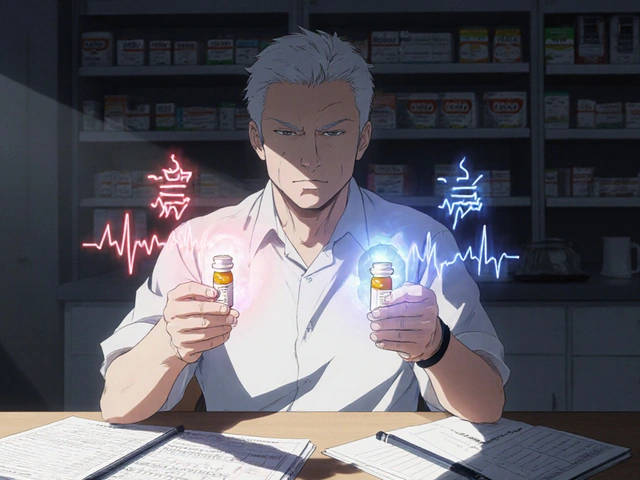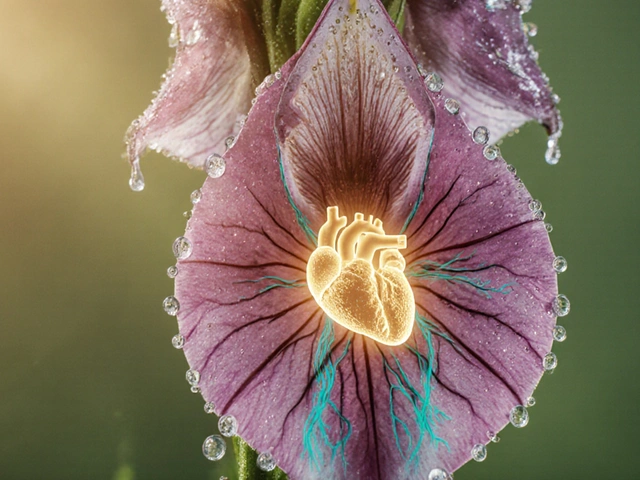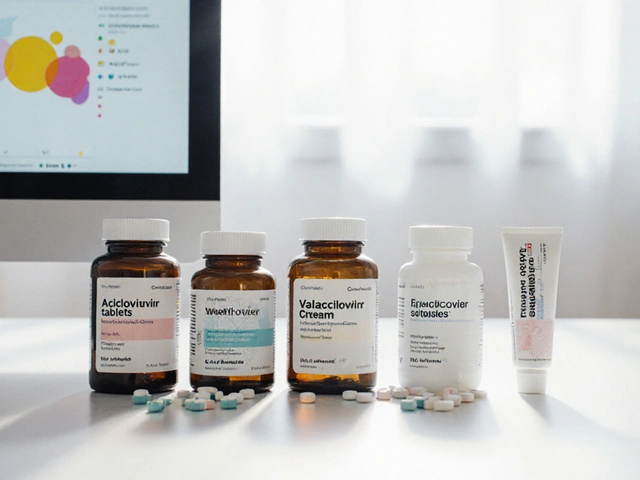
Heard whispers that groundsel is a secret wellness herb? Here’s the truth most posts skip: groundsel (Senecio vulgaris) carries toxins that can damage your liver. There’s no good human evidence it improves health, and several regulators warn against using it. If you clicked in for benefits, I’ll show what’s real, what’s risky, and safer ways to get the results you want-without gambling with your liver.
TL;DR / Key takeaways
- Groundsel is a common weed that contains pyrrolizidine alkaloids (PAs), compounds linked to liver injury and cancer in animal studies.
- There’s no solid clinical evidence that groundsel treats digestion, pain, or “detox.” Historical use doesn’t equal proven benefit.
- Regulators and poison centers (Australia, Europe, UK, WHO) advise avoiding ingestion of PA-containing herbs unless PAs are removed.
- If you want the same outcomes people promise from groundsel (better digestion, “liver support,” calming), safer, studied alternatives exist.
- Practical plan: stop internal use, learn to spot PA warnings on labels, and choose evidence-backed options from reputable brands.
What groundsel is, and why it got a wellness halo
Groundsel is the small, scrappy weed with yellow daisy-like blooms you see across roadsides and garden beds. The Latin name is Senecio vulgaris. It’s part of the Asteraceae family, the same family as chamomile and dandelion. Different regions use the name “groundsel” for different plants, which creates confusion. In herbal shop talk, it usually means Senecio species-plants known for pyrrolizidine alkaloids (PAs).
So where did the “benefits” hype start? Traditional texts sometimes mention groundsel as a laxative, a skin wash, or a women’s health herb. A few animal and lab studies on related species looked at anti-inflammatory or antimicrobial effects in petri dishes. That’s a long way from a proven, safe human benefit. In actual people, we don’t have high-quality trials showing it helps digestion, liver function, PMS, or pain.
On the flip side, we do have clear toxicology: unsaturated PAs can form reactive metabolites in the liver. That’s why poison centers and regulators flag groundsel. Agencies warn that regular exposure-even in small amounts-adds up over time. That risk outweighs the unproven upside.
Put simply: if you’re here for groundsel benefits, you deserve straight talk-there’s no reliable human evidence for them, and there is credible evidence of harm.
Evidence vs. risk: what science and regulators actually say
Let’s line up claims with what trustworthy bodies say.
What’s true about PAs? They’re found in many plant families, including Senecio. Toxicology groups (WHO/FAO, European Food Safety Authority, and national agencies) classify the unsaturated PAs as genotoxic and carcinogenic in animal models. Human case reports and outbreaks link PA exposure to hepatic veno-occlusive disease (also called sinusoidal obstruction syndrome), liver failure, and chronic liver injury. You’ll also see warnings about PA contamination in teas, honey, and herbal blends if PA-producing plants sneak into harvests.
What about “detox”? That word sells, but your liver’s detox system is enzyme-driven and complex. Herbs can influence liver enzymes, but for groundsel, the main “effect” is toxic stress, not support. No clinical trials show groundsel improves liver enzymes or long-term liver outcomes in humans.
Historical topical use? You may see mentions of poultices or washes. Even topical products can be a problem if used over damaged skin or on large areas, because PAs can absorb through skin. Medical and regulatory advice treats PA-containing plants as unsafe unless PA-free extracts are proven.
Who says avoid it? A few examples you can look up: Australia’s Therapeutic Goods Administration (TGA) restricts PA-containing herbs, European and UK authorities have set strict limits on PA exposure in foods and herbal products, and WHO working groups have long cautioned on PA-related liver injury. Poison information centers in Australia and abroad advise against Senecio ingestion. If a label doesn’t explicitly say “PA-free” and provide testing assurances, assume it’s not safe.
| Claim about groundsel | What science says | Risk note | Who backs this up |
|---|---|---|---|
| “Supports liver detox” | No human trials showing liver benefits | PAs linked to liver injury; chronic exposure is the bigger risk | WHO monographs; national poisons centers; EFSA/TGA statements |
| “Soothes digestion” | Insufficient human evidence | Risk outweighs unproven benefit | Clinical toxicology reviews; regulator advisories |
| “Safe if used short-term” | Genotoxicity means no safe exposure threshold is established | Even small, repeated doses add up | Food safety authorities; toxicology guidance |
| “Fine as a skin wash” | Absorption through skin is possible; data are limited | Not recommended, especially on broken skin | Regulatory cautionary notes |
Bottom line here: when regulators, toxicologists, and poison centers all point the same direction, pay attention.

How to stay safe: spot, avoid, and replace
If you’ve already bought something labeled “groundsel,” “Senecio,” “ragwort,” or similar, press pause. Here’s a simple, safe plan.
1) Check the label-do not ingest unless it’s certified PA-free.
- Scan the ingredient list for Senecio species names. “Senecio,” “Jacobaea,” “Packera,” “ragwort,” “tansy ragwort,” “stinking willie” are red flags.
- Look for a clear statement: “pyrrolizidine alkaloids (PAs) not detected” or “PA-free extract,” plus batch testing. If there’s no PA testing stated, treat it as unsafe.
- Multi-herb teas can be contaminated. If the brand does not publish contaminant testing, choose a different product.
2) If you already took it, what now?
- Stop internal use. Do not panic-most exposures are low-but stop the source.
- Watch for symptoms: fatigue, right-upper abdominal pain, nausea, itching, dark urine, jaundice (yellowing eyes/skin), swelling. If any appear, seek medical advice promptly and tell your clinician about the herb.
- If you’re pregnant, breastfeeding, have liver disease, or give supplements to children, speak to a health professional even if you feel fine.
3) Gardeners: remove it safely.
- Wear gloves. Pull plants before they set seed. Double-bag and bin them-don’t compost.
- Keep pets and livestock away; PAs are toxic to animals too.
- If you’re unsure about identification, check a local weed guide (in Australia, state DPI/weed boards have photo guides).
4) Replace the promised “benefits” with options that actually stack up.
Match the goal to something with human evidence and a better safety profile. Always check interactions and talk with a clinician if you have conditions or take meds.
| Your goal | Safer option | Typical studied dose range | Evidence snapshot |
|---|---|---|---|
| Gentle digestive support (bloating, IBS) | Enteric-coated peppermint oil | 0.2-0.4 mL per capsule, 1-3×/day before meals | Multiple RCTs show reduced abdominal pain and bloating in IBS |
| Nausea relief or mild GI upset | Ginger (capsules or tea) | 1-2 g/day divided; tea: 2-3 g dried rhizome per cup | Consistent evidence for nausea; supportive data for dyspepsia |
| Perceived “liver support” | Milk thistle (silymarin standardized extract) | 140-210 mg silymarin, 2-3×/day | Mixed but suggestive evidence for enzyme support in some liver conditions; good safety profile |
| General anti-inflammatory support | Curcumin with piperine or optimized forms | 500-1000 mg curcumin/day; take with food | Human trials show modest benefits for joint pain and markers of inflammation |
| Constipation relief | Dietary fiber (psyllium) and water | 2-6 g psyllium 1-2×/day with 250-300 mL water | Strong evidence; improves stool frequency and consistency |
Notes from Sydney life: In Australia, brands that are listed or registered with the TGA show an AUST L or AUST R number on the label. That doesn’t guarantee results, but it signals some quality checks. For herbs, I look for batch testing and contaminants reports (PAs, heavy metals, microbes) from reputable labs.
Your quick-start playbook (examples, checklists, and pro tips)
Use this to make decisions fast and avoid the common traps with wildcrafted or “traditional” herbs.
Example scenarios
- You want a calming tea for the evening. Avoid blends with unclear “meadow herbs.” Choose single-herb chamomile from a brand that publishes contaminant testing-or pick passionflower or lemon balm from a quality supplier. If pollen or ragweed allergies bug you, trial a small cup first.
- You were sold a “liver cleanse” with groundsel listed in tiny print. Return it. Swap in milk thistle or, if you don’t need a supplement, focus on basics: cut alcohol for 4-8 weeks, eat protein and fiber daily, and sleep 7-9 hours.
- You forage. Great hobby, but PA plants look like lots of harmless weeds. If you’re not 100% confident and you don’t have a guide trained in botany, skip it for internal use.
Herb safety checklist (7 points)
- Identify the exact Latin name on the label.
- Check a reputable monograph (e.g., national regulator, pharmacopeia, or poison center) for safety notes.
- Look for PA-free, pesticide-free, and heavy metals testing with batch numbers.
- Review interactions (blood thinners, heart meds, antidepressants, anti-seizure meds are top watch-outs).
- Start low, go slow. Stop if you feel off (itching, dark urine, nausea, dizziness).
- Pregnant, breastfeeding, kids, liver or kidney disease: get professional advice first.
- Buy from brands that disclose supply chains and testing. If a company won’t answer simple safety questions, that’s your answer.
Red flags on labels
- “Proprietary blend” with no amounts and vague plant names.
- “Detox” claims without details, or promises to treat disease.
- No contact info, no batch/lot number, no testing mentioned.
Pro tips
- Teas and honeys can pick up PAs from weeds in fields. Trusted brands test for this.
- “Natural” doesn’t mean safe. Tobacco, hemlock, and oleander are natural too.
- If you like DIY herbal blends, keep them topical and avoid PA families unless a qualified herbalist confirms PA-free status.
Questions people ask (mini‑FAQ) + what to do next
Is any amount of groundsel safe? For PA-containing plants like Senecio, regulators treat exposure as “as low as reasonably achievable.” There isn’t a proven safe oral dose for regular use.
What about PA-free extracts? Some manufacturers claim PA-free processing. If you can verify batch testing from a credible lab and your clinician is on board, that’s a different product class. But that’s not the same as wild groundsel or generic powders.
Can I use groundsel on skin for rashes? Not recommended. Skin can absorb PAs, especially if the skin is broken or used over large areas. Choose non-PA herbs with safety data for topical use (e.g., colloidal oatmeal, aloe gel from reputable brands).
Are there “good” kinds of groundsel? Names overlap across species and regions. In practice, if a product says “groundsel” and doesn’t present PA testing, avoid it. Don’t rely on common names.
How fast do PA problems show up? It varies. Reports describe weeks to months of exposure before symptoms. That’s why people underestimate the risk-the harm can be delayed and subtle at first.
I’m in Australia-any local guidance? Yes. The TGA regulates herbal products and poison centers advise against PA ingestion. State weed bodies list Senecio species as problem weeds. Choose TGA-listed products when possible and ask brands about PA testing.
What if I’m already on herbs and meds? Bring the bottles to your GP or pharmacist. Many clinics in Australia are used to reviewing supplements. Better an honest chat now than a surprise interaction later.
Next steps if you were aiming for a specific benefit
- Digestion: trial peppermint oil capsules for 2-4 weeks; track symptoms. If you have reflux, use enteric-coated and take away from food.
- Liver “reset”: skip alcohol, add 25-30 g fiber daily, prioritize sleep, and consider milk thistle if your clinician is okay with it.
- Calming: consistent bedtime, light exercise, and consider lemon balm or passionflower from a tested brand.
Troubleshooting
- If you feel worse on any supplement, stop and reassess. “Herx” stories are often just side effects.
- If you can’t verify safety data from a brand, pick another brand-there are plenty.
- If you have a liver history, don’t experiment. Work with a clinician and get labs as needed.
You came here looking for a hidden edge. The edge is this: be evidence-first, choose tested products, and avoid herbs like groundsel that stack hidden risks without payoffs. Your liver will thank you.





joba alex
August 29, 2025 AT 23:54While most folks cling to the myth that groundsel is a miracle herb, the toxicological data – especially the pyrrolizidine alkaloid profile – tells a different story. The regulatory frameworks (FAO/WHO, EU) classify those alkaloids as genotoxic, which means any chronic exposure is a red flag. So unless you have a PA‑free extract with certified testing, you’re basically sipping poison. I’m not saying we should all turn into teh‑phobes, but the risk‑benefit ratio is heavily skewed toward danger.
Rene Lacey
August 31, 2025 AT 03:40The discourse around groundsel invites us to reflect on how we assign value to botanical entities.
The allure of a “secret” herb becomes a symbol of rebellion against institutional authority.
Yet rebellion, when unfettered by empirical scrutiny, can masquerade as wisdom while eroding the very health it purports to protect.
The presence of pyrrolizidine alkaloids (PAs) in Senecio vulgaris is not a peripheral curiosity but a mechanistic pathway to hepatic sinusoidal obstruction.
Studies in rodent models have demonstrated that even sub‑acute dosing can initiate cellular apoptosis and fibrotic cascades.
Human case reports, though less numerous, consistently link chronic PA ingestion to veno‑occlusive disease and, in extreme cases, hepatic carcinoma.
Regulatory bodies such as the WHO and EFSA therefore adopt a precautionary principle, advocating “as low as reasonably achievable” exposure thresholds.
This principle underscores a deeper epistemic humility: we must acknowledge the limits of our knowledge before declaring a herb safe.
When proponents cite historical uses – laxative, topical wash, women’s health – they often conflate correlation with causation.
The scientific method demands randomized, placebo‑controlled trials, which are conspicuously absent for groundsel in human populations.
In contrast, alternatives like peppermint oil, ginger, and milk thistle have amassed robust clinical data supporting efficacy and safety.
Substituting a well‑characterized phytochemical for an untested, potentially toxic plant is a pragmatic application of evidence‑based medicine.
Moreover, the modern consumer is equipped with analytical tools – batch testing, certification, and transparent supply chains – that can mitigate hidden risks.
Choosing products that openly disclose PA‑free status aligns with the ethical imperative to do no harm.
Ultimately, the decision to eschew groundsel is less about fear and more about a disciplined commitment to informed, rational health stewardship.
johnson mose
September 1, 2025 AT 07:27Hey, I’ve seen a lot of people reach for groundsel because it’s cheap and “natural,” but the reality is that the PA content varies wildly depending on where it’s grown. If you can’t verify a PA‑free certificate, the safest move is to put it on the shelf and pick a vetted alternative. For digestion issues, peppermint oil capsules have solid trial data and a clean safety profile. And if you’re after a calming brew, chamomile or lemon balm from a reputable brand are far less risky choices. Bottom line: the cost of a bad herb can far outweigh any perceived benefit.
Charmaine De Castro
September 2, 2025 AT 11:14Just wanted to add a quick friendly reminder – if you already have a groundsel product at home, double‑check the label for any mention of “PA‑free” or batch testing. If that info is missing, it’s better to be safe and return it. There are plenty of trustworthy herbal brands that proudly share their testing results, and they’ll give you peace of mind. Stay healthy and happy!
Mark Mendoza
September 3, 2025 AT 15:00👍 Great summary! I totally agree with the precautionary approach. 🌿 If you’re looking for liver support, milk thistle has a decent safety record and some studies backing it up. 💊 And for a gentle digestive aid, ginger tea is both soothing and well‑researched. Keep an eye on the label, and don’t hesitate to ask the manufacturer about PA testing. 🙏
Dan Tourangeau
September 4, 2025 AT 18:47PA‑free certification is the key – otherwise, skip it.
Bernard Valentinetti
September 5, 2025 AT 22:34Ah, the allure of the obscure herb – it beckons like a siren, promising hidden health epiphanies; yet, the empirical substrate-*pyrrolizidine alkaloids*-constitutes a veritable minefield of hepatotoxic potential. 🚨 One must interrogate the ontological validity of “traditional use” against the rigor of modern pharmacovigilance. 📚 If your tincture lacks explicit, peer‑reviewed PA analyses, then, dear seeker, you are courting danger with the innocence of a naïve alchemist. 🧪 In short: demand data, or abstain. 🌱
Kenneth Obukwelu
September 7, 2025 AT 02:20Indeed, the poetic romance of “wildcrafting” often blinds us to the molecular truth that lurks beneath the petals. While the narrative of ancient wisdom is compelling, the liver does not care for stories; it responds to chemistry. Thus, the drama of the herbist’s quest should give way to the sober script of toxicology. Choose safety over mythology, and let the evidence be your compass.
Josephine hellen
September 8, 2025 AT 06:07Reading through all the detailed warnings can feel a bit overwhelming, but there’s a bright side to this whole discussion! 🌞 Knowing exactly which herbs are safe gives us the power to craft personalized wellness routines that truly work for us. Imagine swapping a questionable groundsel blend for a curated cup of peppermint oil or a ginger shot that both taste great and have solid research behind them. 🙌 Over time, those small, evidence‑based choices add up to big health dividends – better digestion, calmer evenings, and a liver that thanks you with every breath. So, let’s toast to informed herbalism and celebrate the freedom to choose smarter, safer, and more joyful paths to well‑being.
Ria M
September 9, 2025 AT 09:54The very notion that a humble weed could masquerade as a panacea is, frankly, theatrical absurdity. 📜 Yet the silence of rigorous trials on groundsel is deafening, echoing the same cautionary chorus heard from WHO, TGA, and EFSA. 🌍 In precise terms, the absence of reproducible human data combined with documented PA toxicity seals its fate as a high‑risk herb. 🎭 Therefore, let us not be seduced by romanticized folklore; instead, empower ourselves with validated alternatives that honor both science and tradition.
Michelle Tran
September 10, 2025 AT 13:40Skip groundsel – it’s not worth the gamble. 😑
Caleb Ferguson
September 11, 2025 AT 17:27For anyone still curious about alternatives, I recommend looking into standardized extracts that have undergone third‑party testing. Milk thistle (silymarin) at 140 mg twice daily, peppermint oil enteric‑coated capsules, or curcumin with piperine are all backed by clinical studies. Keep a log of any supplement you try and share your observations – community data helps everyone make safer choices.
Delilah Jones
September 12, 2025 AT 21:14Bottom line: groundsel’s risk profile outshines any unproven benefit. If you’re after digestion, inflammation, or liver support, there are proven, PA‑free options ready on the market. Don’t gamble with hepatotoxic compounds when safer, studied herbs exist. Stay sharp and read the fine print.